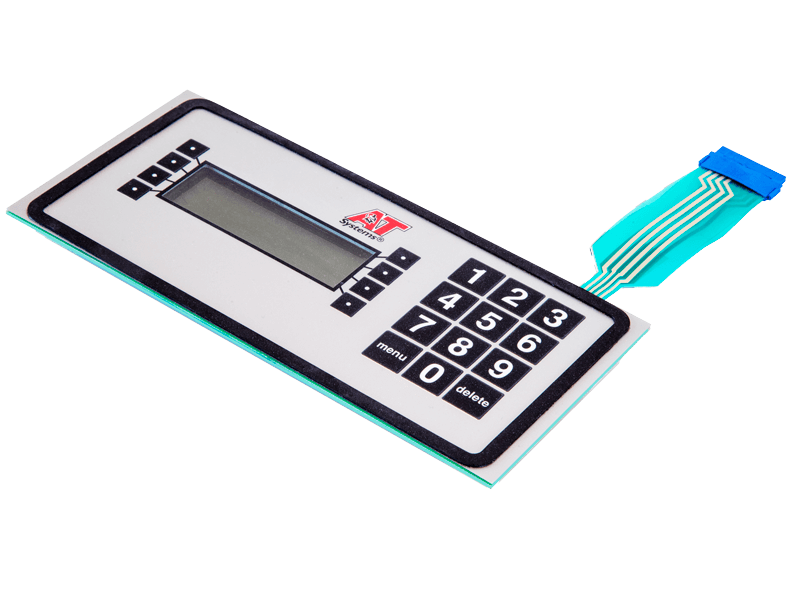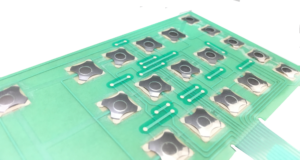The Benefits of Utilizing Membrane Changes in Consumer Electronic Devices
Membrane buttons are progressively identified for their considerable benefits in consumer electronics, especially in improving individual interaction and streamlining production procedures. The versatility in design enables for tailored services that satisfy varied consumer needs.
Boosted Individual Experience
In today's affordable landscape of customer electronics, improved user experience is vital; virtually 85% of individuals focus on instinctive user interfaces. Membrane layer switches play a vital role in achieving this level of use.
The tactile responses offered by membrane buttons is essential for guiding individual actions, guaranteeing that commands are signed up properly. This feedback mechanism heightens and reduces mistakes user contentment, cultivating a favorable connection in between the device and the individual. The customizable nature of membrane switches over allows manufacturers to tailor user interfaces to specific customer requirements, making devices much more available and welcoming.
In addition, membrane layer switches can incorporate backlighting and graphic overlays, better enhancing exposure and usability in varied settings. This versatility makes certain that tools stay easy to use and functional, regardless of the setup. On the whole, the combination of membrane layer switches into consumer electronic devices significantly improves individual experience, driving brand commitment and complete satisfaction in a significantly open market.
Affordable Production
Customer electronics manufacturers are constantly looking for ways to balance top quality with price, and membrane switches provide a compelling option for affordable manufacturing. membrane switch. These elements are inherently less complex than traditional mechanical switches, which minimizes both production costs and complexity. The light-weight layout of membrane layer changes enables reduced delivery expenses and easier combination right into portable gadgets, better enhancing their allure in an open market

Manufacturers can create membrane layer switches in high quantities, taking advantage of economic situations of range. This automation capacity makes sure constant top quality while considerably reducing per-unit expenses. Furthermore, the materials utilized in membrane layer switches, such as polyester and polycarbonate, are commonly less costly than those needed for conventional button technologies, adding to overall cost savings.
The production process for membrane layer switches usually needs fewer steps and much less labor compared to various other switch kinds. This structured strategy not just reduces labor costs however additionally speeds up time-to-market, enabling business to respond swiftly to customer demand. The mix of decreased material costs and reliable manufacturing procedures settings membrane layer switches as a clever investment for makers intending to supply high-grade customer electronic devices at affordable price points.
Layout Flexibility and Customization
While conventional mechanical buttons commonly impose constraints on design as a result of their mass and called for placing mechanisms, membrane buttons supply exceptional adaptability and personalization choices for customer electronic devices. This innovative technology enables developers to produce sleek, inconspicuous interfaces that can flawlessly integrate right into different item visual appeals, from smartphones to kitchen area home appliances.
Membrane buttons can be produced in virtually any kind of form or dimension, allowing manufacturers to customize the format to particular ergonomic and practical requirements. This flexibility not only enhances individual experience yet additionally enables artistic styles that straighten with brand name identity. The usage of printed graphics on membrane switches over uses the possibility for vibrant colors and complex designs, which can be conveniently customized without significant cost implications.
In addition, my review here membrane layer switches can include numerous functionalities right into a single layer, decreasing the requirement for multiple parts and simplifying setting up processes. This structured layout strategy minimizes area and weight, making it excellent for compact consumer electronics. Generally, the design versatility and customization capabilities of membrane switches equip manufacturers to innovate, eventually leading to even more engaging and easy to use products.
Toughness and Integrity
As innovation proceeds to progress, the durability and dependability of membrane buttons have actually become essential considerations for makers in the customer electronics industry. Membrane layer switches are developed to stand up to rough environmental problems, including temperature level changes, moisture, and dust direct exposure. Their robust building commonly involves multi-layered materials that supply an effective obstacle against pollutants, ensuring durability and consistent efficiency.
In addition to environmental resistance, membrane layer changes deal superior mechanical reliability. Unlike typical mechanical buttons, which may wear over time, membrane switches utilize a sealed design that lessens the danger go to this website of mechanical failure. The absence of relocating parts not only boosts their life expectancy yet likewise reduces wear and tear, making them optimal for high-usage applications.
Additionally, membrane layer switches can endure a significant number of actuations without loss of capability, typically surpassing numerous cycles (membrane switch). This sturdiness equates to decrease substitute prices and minimized downtime for customers and suppliers alike. On the whole, the combination of environmental strength and mechanical reliability makes membrane switches a tactical selection for consumer electronic devices, ensuring that gadgets stay my latest blog post functional and reliable throughout their desired lifespan

Streamlined Product Development
The resilience and reliability of membrane switches considerably add to structured item advancement in the consumer electronic devices sector. By incorporating these buttons early in the layout process, manufacturers can lower the intricacy and variety of parts required in their items. Membrane layer buttons are compact and light-weight, enabling a lot more efficient area utilization within devices, which can result in simplified assembly procedures.

The ease of producing membrane switches also plays a critical function in product growth. With contemporary printing techniques and materials, production can be scaled efficiently, lowering and minimizing lead times waste. This results in lower manufacturing expenses, improving overall productivity.

Verdict
In conclusion, membrane changes considerably improve customer electronics by giving an enhanced customer experience, cost-efficient manufacturing processes, and flexible design alternatives. The integration of membrane layer switches over stands for a strategic selection for makers looking for to optimize item layout and efficiency.
Membrane buttons are significantly acknowledged for their substantial benefits in consumer electronic devices, specifically in enhancing customer interaction and improving manufacturing processes. In addition, the products utilized in membrane layer buttons, such as polyester and polycarbonate, are frequently less expensive than those needed for standard button modern technologies, adding to total cost savings.
The manufacturing process for membrane changes normally requires fewer actions and less labor contrasted to various other button kinds. Unlike standard mechanical switches, which might use out over time, membrane layer switches utilize a covered layout that lessens the threat of mechanical failing.In verdict, membrane layer changes considerably boost consumer electronic devices by offering an improved customer experience, affordable production procedures, and functional design alternatives.